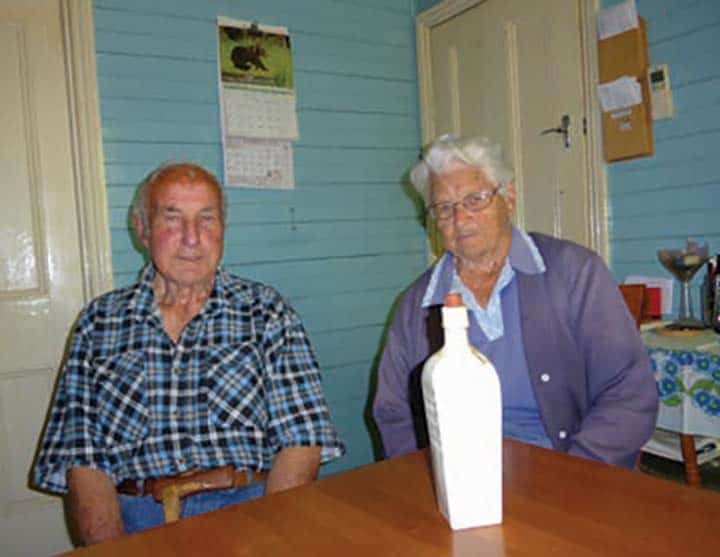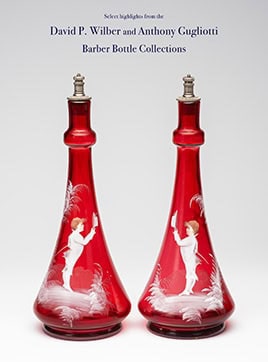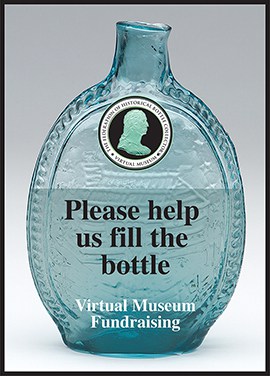Hartwig Kantorowicz Antique Milk Glass Bottle Still in Use in Australia
Article contributed by Bob Spiller of Gunning and District Historical Society https://gunninghistory.blogspot.com.au
Ferdinand and Elizabeth Meyer’s Peachridge Glass website specializes in Early American Antique Bottles and Glass. However, readers may well be interested in a Hartwig Kantorowicz milk glass bottle which recently came to light in Australia – still with a good portion of its contents still intact after close to 80 years since it was opened.
Mr. and Mrs. Hillier have lived in the Gunning district all their lives. In recent weeks they have been helping me learn more about their lives and times in the area. At our first meeting, the couple brought out their very old bottle for me to see.
Well over 70 years ago a young Sid was bed ridden for a fortnight with a very serious gash to the leg suffered when he was impaled by a cut sapling stem while riding his bike home from school. He owes his return to full health and mobility to this very efficacious and versatile product. The bottle they are displaying in the adjacent picture is the same one used by Sid’s mother to treat his injury at the time.
Sid’s oil of turpentine was distilled and decanted into bottles made of a material called milk glass. It was produced by the Hartwig Kantorowicz company, famous in Poland (where it began in 1823) and Europe for its liqueurs, spirits and fruit juices. Hartwig Kantorowicz was also well known in the wider world. Sid’s bottle most probably comes from the company’s Hamburg factory which operated under the same name from the late 1870s to December 1920. Ferdinand has provided a very good history of this company which you can see here.
Read: History of Kantorowicz Family and their Factory
Sid and Maree’s Oil of Turpentine – Seriously Good Stuff
Turpentine and petroleum distillates similar to kerosene have been used medicinally since ancient times and are still trusted as folk remedies today. They were used in ancient Babylon to treat stomach problems, inflammations and ulcers. Sid, of course, is living proof of the efficacy of oil of turpentine for treating wounds. The following advertorial, taken from the from the “Bundaberg Mail and Burnett Advertiser” of June 1916 but also seen in lots of other papers around this time, tells you just how good this stuff is.
OIL OF TURPENTINE
One of the most useful drugs you can keep in the house is oil of turpentine— the oil distilled by the aid of steam from the resinous material which exudes from certain species of fir-tree. Resin left after the distillation forms the basis of an official ointment, recommended for broken chilblains, ulcerated legs, and the like. It is interesting to remember that the precious amber, dear to smokers, and often seen around fair ladies’ necks is the fossil resin of extinct species of firs.
The oil of turpentine forms the best local application for lumbago, rheumatism, stiff or sprained joints, and forms the chief constituent of many well known patent embrocations or liniments; You may add it to olive oil in the proportion of one part turpentine to five parts of olive oil, and rub it in well at bed time. It acts best if you warm the mixture before use. Or you may add one part of turpentine to five or six methylated spirit, and use as a liniment, well shaking up beforehand. If you want a counter irritant to your chest or elsewhere — doing the work, of the familiar mustard plaster—you heat a piece of flannel, pour a little turpentine on it, and hold it firmly against the skin for ten minutes.
But Wait – There’s More
Oil of turpentine was also recommended as a vermifuge (an intestinal worm killer) for both sheep and children. In October 1871 a correspondent signing himself “Paterfamilias”, knowing how good this product was for ridding sheep of worms, wrote to the editor of “The Queenslander” asking if “rectified spirits of turpentine would also be of service in the case of children.” This father of four children, all of whom suffered from worms, had tried several supposed remedies without success and was anxious to learn what dosage would work in children.
An expert adviser contacted by the paper said: “I use oil of turpentine in the following proportions: – for children, from a quarter to half an ounce; for adults from half to one ounce, repeated once a fortnight. If the effect is not satisfactory after two doses, see a medical man.” Sid is blessed with an excellent memory and, so far as he can recollect, his mother used oil of turpentine as a wound dressing and disinfectant only. He was never dosed with it internally so cannot vouch for its value as a vermifuge.
Warning
Sid is a living testimonial to the effectiveness of medicinal oil of turpentine and the reports of its benefits by late colonial and early federation newspaper correspondents in Australia are compelling. But please do not attempt self treatment at home – particularly with mineral turps purchased from your local hardware or grocery store. They are entirely different products.
Read: Introducing Four Local Treasures: The Hazells and the Hilliers (and some early Australian medicines)














Leave a Reply
You must be logged in to post a comment.